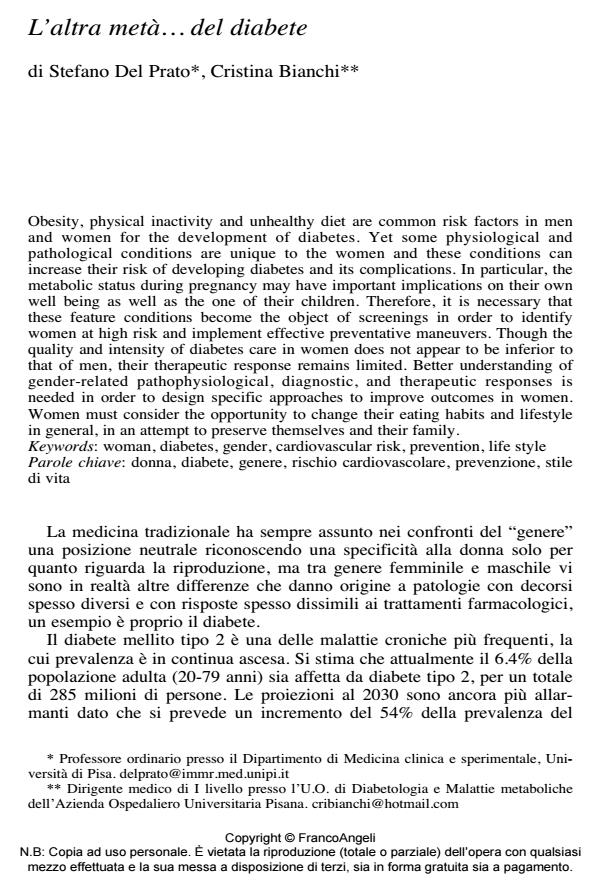L’altra metà.. Del diabete
Titolo Rivista SALUTE E SOCIETÀ
Autori/Curatori Stefano Del Prato, Cristina Bianchi
Anno di pubblicazione 2014 Fascicolo 2014/1
Lingua Italiano Numero pagine 17 P. 58-74 Dimensione file 902 KB
DOI 10.3280/SES2014-001006
Il DOI è il codice a barre della proprietà intellettuale: per saperne di più
clicca qui
Qui sotto puoi vedere in anteprima la prima pagina di questo articolo.
Se questo articolo ti interessa, lo puoi acquistare (e scaricare in formato pdf) seguendo le facili indicazioni per acquistare il download credit. Acquista Download Credits per scaricare questo Articolo in formato PDF

FrancoAngeli è membro della Publishers International Linking Association, Inc (PILA)associazione indipendente e non profit per facilitare (attraverso i servizi tecnologici implementati da CrossRef.org) l’accesso degli studiosi ai contenuti digitali nelle pubblicazioni professionali e scientifiche
Obesity, physical inactivity and unhealthy diet are common risk factors in men and women for the development of diabetes. Yet some physiological and pathological conditions are unique to the women and these conditions can increase their risk of developing diabetes and its complications. In particular, the metabolic status during pregnancy may have important implications on their own well being as well as the one of their children. Therefore, it is necessary that these feature conditions become the object of screenings in order to identify women at high risk and implement effective preventative maneuvers. Though the quality and intensity of diabetes care in women does not appear to be inferior to that of men, their therapeutic response remains limited. Better understanding of gender-related pathophysiological, diagnostic, and therapeutic responses is needed in order to design specific approaches to improve outcomes in women. Women must consider the opportunity to change their eating habits and lifestyle in general, in an attempt to preserve themselves and their family.
Parole chiave:Donna, diabete, genere, rischio cardiovascolare, prevenzione, stile di vita
Stefano Del Prato, Cristina Bianchi, L’altra metà.. Del diabete in "SALUTE E SOCIETÀ" 1/2014, pp 58-74, DOI: 10.3280/SES2014-001006